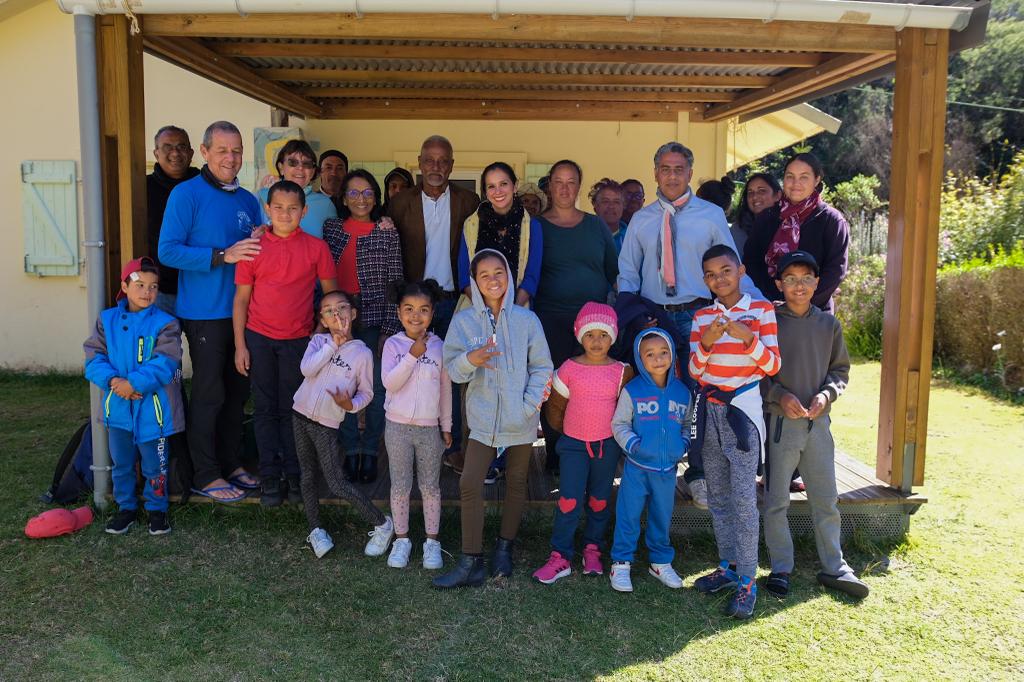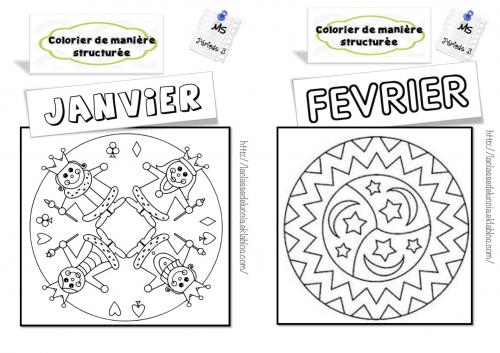An Appraisal of the International Symposium « Charity and Humanitarian action in the Near East, from Antiquity to Present Day »
by Falestin Naili, Valentina Napolitano, Pauline Piraud-Fournet
As half of humanity is currently experiencing confinement, curfews and border closings in the face of the Covid-19 pandemic, we are reminded of an ancient practice that has shaped human history. At least since the end of Antiquity, welfare and charity often operated in similar circumstances, be it as a consequence of epidemics, war or population displacement (Fig. 1). A recent scientific symposium provided a long-term perspective on mutual aid, solidarity and charities in the Near East.

Fig. 1. Bonaparte visiting the plague victims of Jaffa. Antoine-Jean Gros, 1804, Louvre Museum, Paris / Public Domain
The current crisis highlights the need for urgent reflection on relief and assistance all over the world. This reflection should be nourished by the multiple experiences of informal solidarity in the context of violence, dispossession and displacement that characterize the everyday life of many populations in Near Eastern countries at war and in other countries where states fail to provide social assistance. This appraisal of the symposium entitled “Charity and Humanitarian Action in the Near East”, held at the French Institute for the Near East (Ifpo) in Amman on the 17th and 18th of November 2019, would also like to offer some elements for a more general comprehension of social and political reconfigurations taking place in contexts of crisis.
The longitudinal approach implied in the title of the symposium could be seen as a major challenge, but, in fact, there is one major common aspect: charity and poor relief have been a means for maintaining social order since ancient times. During antiquity, charity for the needy (the poor, sick and strangers) was one of the bases on which the Church built its power and wealth, and the Byzantine Emperors accompanied the project of the Church as a guarantee for social stability (Patlagean 1977, Brown 1998). In this context, the Near East, as the cradle of the three monotheistic faiths, saw, along with the emergence of an extended pilgrimage network, the multiplication of hosting structures and charity organizations (Maraval 1985, Dagron 1993, Touati 2007) that also controlled people on the move. During the Islamic periods, the pious foundations (waqf) became an important structure for supporting charitable institutions (Deguilhem 1995, Ghazaleh 2011). Since the beginning of the 20th century, multiple conflicts and displacements caused by the dissolution of the Ottoman Empire, the establishment of the mandatory system, and later on, the state-building process, have reshaped humanitarian assistance in the region. The Armenian genocide of 1915 (Watenpaugh 2015) and the Palestinian Nakba of 1948 (Al Husseini 2003) are two important moments of expansion of humanitarianism in the region. More recently, as a consequence of the US invasion of Iraq in 2003 and the war in Syria which started in 2011, humanitarian assistance has become essential in mitigating the impact on both countries at war and neighbouring countries hosting refugees. Despite this very large time span and the different social and political configurations taken into account, Ifpo’s symposium aimed at underlining the elements of continuity that exist on the level of actors (from family solidarity to local religious organizations, governmental, non-governmental and international actors), their modes of action (charity, relief, development, welfare), the beneficiaries (poor, ill, pilgrims, refugees), the goals and motivations that frame these actions (philanthropy, religion, empathy, social justice, redistribution, political control). Three main transversal themes structured our reflection.
The role of religious and secular power structures
Although charity and humanitarian action are often perceived and represented as apolitical, one of the main transversal issues which emerged in the different presentations is the strong connection with power (this aspect was particularly addressed by R. Deguilhem, B. Hasanat). Randi Deguilhem (CNRS-TELEMMe) showed that paradoxically, charity is not a matter of altruism and that it empowers charity givers more than beneficiaries, namely by establishing a relationship of dependency and domination with beneficiaries. As Francis Joannès (University Paris 1-Sorbonne) pointed out, another element was common to all the presentations and historical periods: the prominent role of political authorities and the state. In addition to its care-taking functions, the state is in charge of regulating social and community relations, whether ethnic or religious. Through laws and intervention of its agents, the state even regulates charity or assistance that is the result of individual initiatives (F. Joannès, M. Whiting, J.-B. Allegrini, K. Boudjemil, S. al-Majali, V. Napolitano, F. Naïli). By performing a control function through its agents or administration, the state collects taxes or makes a financial profit. Likewise, the state also performs this control through the recognition and legal accreditation of institutions. Many papers illustrate this for antiquity as well as during the Crusades and Ottoman times. Following F. Joannès, all this leads to the establishment of rather complex networks linking the agents of charity or assistance with the central state, which encourages or, on the contrary, restricts the scope of these actions.
In addition to the state, religious institutions have shaped the field of charitable and humanitarian action. Charity is inseparable from religion, understood as a system of values and morals, but also as a powerful political system. From ancient times, charitable action has taken the form of almsgiving (structured by the practices of zakat and sadaka in Muslim societies) and philanthropy (A. Kayyali, S. Memis). The analysis of Marlena Whiting (University of Amsterdam) who presented her work in the framework of the research team HospitAm (https://hospitam.hypotheses.org/) dedicated to Hospitality in Mediterranean Antiquity, recalled the interdependence between political power, religious institutions and beneficiaries, links that seem valid for most of the time periods and contexts addressed during the symposium (Fig. 2).

Fig. 2. Structures for Charity and Humanitarian Relief in the 4th-6th centuries. From M. Whiting, 2019.
In contemporary times, the charitable phenomenon is characterized by a desire for secularization as evidenced by the creation of the International Committee of the Red Cross (ICRC) in 1863 (Maietta 2015) (Fig. 3). However different presentations showed the persistence and reaffirmation of confessional logic, as manifested in the emergence of an Islamic humanitarian field in France (E. Qleibo), ecclesiastic structures of assistance to Christian Palestinian and Iraqi refugees in Jordan (N. Neveu) and Syrians in Lebanon (J. Allegrini). Other presentations focused on the interaction between migrants and refugees’ informal forms of solidarity with state institutions in Lebanon and Jordan, stressing how they both address failures in certain social areas and challenge state sovereignty through transnational practices (K. Boudjemil, V. Napolitano).

Fig. 3. Ottoman document reporting a city council decision related to municipal hospital, 1314/1898. Historical Archives of Jerusalem Municipality, Vol6-p8b-items50-53.
In general, as R. Deguilhem emphasized, the actors of charity and humanitarian action have to be placed within the context of the networks in which they were embedded and the power structures surrounding them. Those structures play a central role in defining the categories of the field of charity as it has been examined by the second research axis.
The identification of the categories
Reviewing the multiple terms and categories linked to charity and humanitarian action, this axis allowed us to analyze the circulation and evolution of concepts, categories and practices through different ages. R. Deguilhem compared the two main concepts of charity and humanitarian action, the first one being directly connected to the exchange between a wealthy and a poor person, the second one tending to hide this unequal relationship with its focus on the human being’s right to assistance. Kamel Doraï (Ifpo) emphasized the difference between humanitarian action, conceived as temporary, and its progressive shift toward development as a durable form of assistance. Sahar Aurore Saeidnia (ULB) explained the choice of referring more generally to “doing good” practices in order to include the multiplicity of actors taking part in charity.
Falestin Naïli (Ifpo) discussed the difference between charity and relief. She underlined that the definition of categories is based on the exercise of power and creates hierarchies of “deserving” versus “un-deserving” beneficiaries, groups which are considered as priority and those who are not. Already in Late Antiquity, the poor were registered by the Church to receive assistance (Caseau 2017) ; in contemporary times, these definitions often depend on the recognition along international standards (UNHCR-defined refugees, seekers of political asylum) and on the conditions linked to funding as it was shown by Solenn Al-Majali (Ifpo). She analyzed the way the categorization of Soudanese, Yemenite and Somali populations in Jordan as “non-Syrian refugees” limited their access to humanitarian assistance and asylum.
K. Doraï underlined the strong link between charity and migrations/mobility. In this framework, most beneficiaries are non-citizens and foreigners (Fig. 4). In contemporary times, this has led to debates in Jordan, for example, about the need to also include citizens as beneficiaries of humanitarian action. Thus, the beneficiaries are divided into different categories, as well as the charity givers, who might be individuals (M. Whiting) as well as associations, churches or the state itself. There are also different patterns of giving. Sometimes the category of beneficiary and givers of assistance can overlap, as Valentina Napolitano (Ifpo) underlined in the case of “refugee to refugee” solidarity practices developed by Syrians in Jordan as a response to the lack of international humanitarian help. The process of the categorization of beneficiaries directly materializes in the spaces where assistance is provided; that topic was addressed by the last axis about the material dimension of charity and humanitarian action.

Fig. 4. Distribution of gas bottles in Zaatari camp. Photograph: A. Montanari, 2012.
The spatial and territorial dimension of charitable and humanitarian action
With the current pandemic crisis still ongoing, it is important to remember that already in the past, epidemics have structured and restructured urban space, leading to the construction of makeshift hospitals and sometimes even contributing to the emergence of entire new cities as a result of wars, forced displacement and migrations. Some presentations clearly showed that the choice of the places where humanitarian action takes place is the result of a political decision which shows the different categorizations and degrees of integration or marginalization of beneficiaries. Charity and humanitarian action leave their mark on landscapes with urbanistic and architectural facilities, be it as camps, hospices, hospitals and other related buildings (M. Voltaggio, P. Piraud-Fournet, P. Antaki-Masson, N. Neveu, M. Leveau, J.-B. Allegrini). P. Piraud-Fournet (Ifpo) suggested that alongside with textual sources, the analysis on the field of archaeological vestiges of pertinent buildings is able to provide information on former charitable and care practices and the way that the poor and the sick as well as strangers and travellers were accepted by local communities (Fig. 5). The spread of welfare buildings was also a way to mark control over a territory (P. Antaki-Masson, N. Neveu, J.-B. Allegrini).

Fig. 5. Ancient hospices in the Byzantine Provincia Arabia. Reconstruction and drawing: H. C. Butler 1919, p. 138, pl. IX, captions: Piraud-Fournet 2019.
Often, nowadays, the location of facilities for hosting migrants or foreigners are in relation to borders, turning them into places where the state seeks to control population movements and the integration or exclusion of migrants. In the 20th century, the management of refugee flows and the creation of reception facilities such as refugee camps have profoundly transformed and forged cities in the Near East (Doraï 2006). More recently, assistance facilities seem to be designed to set the needy apart from the local communities and keep them out of sight. This can be observed through the camps where Syrian displaced and refugees live near the Syrian border (Fig. 6).

Fig. 6. Registered Syrian Refugees in Turkey, Lebanon, Jordan, Egypt and Irak. UNHCR online data, 2017. The map shows that most of the Syrian refugees camps are set up next to the Syrian borders. https://data2.unhcr.org/en/documents/details/60859
Thus, the region’s former traditions of charity and assistance continue to encourage individual and collective generosity; this tradition is also expressed in the construction and adaptation of hosting structures with respect to the necessities of any given situation. The large historical perspective of this conference has helped bring forth some of the underlying dynamics of charity, relief and humanitarian assistance in the Near East. The forthcoming publication will address the important role of the state, the inherent issues of power and empowerment, the often exclusionary nature of categories and the role that material traces (buildings, facilities, archives) can play in documenting the phenomenon. Given the enthusiastic response to the first symposium, Ifpo plans another symposium on this topic in 2021. Indeed, the topic is far from exhausted. For instance, most of the information gained about charity and welfare in ancient times has been provided by textual sources. There is a need now to focus on the material and archaeological data (anthropology, architectural vestiges, objects related to care, charitable distribution, etc.). Likewise, it is necessary to analyse the way that new institutions in Ottoman times created by the state coexisted with the more established waqf-structure. For contemporary times, the way charity is used by authoritarian regimes in order to widen the network of its clients also needs further analysis. Moreover, this first symposium has shown the importance of replacing social dynamics in times of crisis in longer temporalities. This is a lesson that should also be followed for making sense of the current pandemic crisis in which we are living.
Bibliography
- Al Husseini Jalal, 2003, « L’UNRWA et les réfugiés : enjeux humanitaires, intérêts nationaux », Revue d’études palestiniennes 86, p. 71-85.
- Brown Peter, 1998, Pouvoir et persuasion dans l’Antiquité tardive : vers un empire chrétien, Pierre Chuvin (trad.), Paris, Le Seuil.
- Caseau Béatrice, 2017, « L’exercice de la charité à Byzance d’après les sceaux et les tessères (Ve-XIIe siècle) », Travaux et mémoires 21, n° 1, p. 31-52.
- Dagron Gilbert, 1993, « Économie et société chrétiennes (VIIIe-Xe siècle). Fondations, maisons pieuses, charité », in J.-M. Mayeur et al. (éds.), Histoire du christianisme. 4. Évêques, moines et empereurs (610-1054), Lonrai, Desclée, p. 280-296.
- Deguilhem Randi (éd.), 1995, Le Waqf dans l’espace islamique : outil de pouvoir sociopolitique, Damas, IFEAD.
- Doraï Kamel, 2006, Les réfugiés palestiniens du Liban. Une géographie de l’exil, Paris, CNRS Editions.
- Ghazaleh Pascale, 2011, Held in Trust: Waqf in the Islamic World, Cairo, AUC Press.
- Maietta Michel, 2015, « Origine et évolution des ONG dans le système humanitaire international », Revue internationale et stratégique 98, n° 2, p. 53-59.
- Maraval Pierre, 1985, Lieux saints et pèlerinages d’Orient. Histoire et géographie. Des origines à la conquête arabe, Paris, Cerf.
- Patlagean Évelyne, 1977, Pauvreté économique et pauvreté sociale à Byzance, IVe-VIIe siècles, Paris, Mouton.
- Singer Amy et al., 2003, Poverty and Charity in Middle Eastern Contexts, Albany, SUNY Press.
- Touati François-Olivier, 2007, « La Terre Sainte : un laboratoire hospitalier au Moyen-Âge ? », in N. Bulst and U. K.-H. Spiess (éds.), Sozialgeschichte Mittelalterlicher Hospitäler, Ostfildern, Jan Thorbecke Publisher, p. 169-211.
- Watenpaugh Keith D., 2015, Bread from Stones: The Middle East and the Making of Modern Humanitarianism, Oakland, University of California Press.
Pour citer ce billet : Falestin Naili, Valentina Napolitano, Pauline Piraud-Fournet, « Facing poverty, plague and population displacement : An Appraisal of the International Symposium ‘Charity and Humanitarian action in the Near East, form Antiquity to Present Day' », Les Carnets de l’Ifpo. La recherche en train de se faire à l’Institut français du Proche-Orient, https://ifpo.hypotheses.org/10455, le 1er juin 2020 [En ligne sur hypothese.org]

Falestin Naili est historienne et anthropologue, chercheuse à l’Ifpo Amman et associée au Laboratoire de Recherche Historique Rhône-Alpes (LARHRA) à Lyon. Ses recherches concernent l’histoire ottomane et mandataire du Bilad Al Sham et la mémoire collective de cette période.

Valentina Napolitano est politiste, chercheuse à l’Ifpo Amman, ses recherches portent sur les migrations forcées, la violence politique et l’action collective au Proche-Orient (Syrie et Jordanie). Après avoir travaillé sur les mobilisations politiques au sein des camps de réfugiés palestiniens à Damas, ses recherches actuelles se concentrent sur les transformations de la sphère familiale syrienne face à la guerre et la migration forcée. Parmi ses dernières publications : avec Jalal Al-Husseini, « La politique jordanienne à l’égard des réfugiés syriens : entre hospitalité et protection des intérêts nationaux », Confluences Méditerranée, 2019/3 (N° 110), p. 127-142 et « Circulations transnationales et transformations de l’engagement. Les militants palestiniens dans l’espace syro-libanais », Revue internationale de politique comparée, 2018/1 (Vol. 25), p. 105-128.

Pauline Piraud-Fournet est archéologue et architecte, chercheuse à ACOR (American Center of Oriental Research) et chercheuse associée à l’Ifpo, à Amman. En 2016, elle a soutenu une thèse à Paris IV-Sorbonne sur l’architecture domestique et l’urbanisme de Bosra en Syrie à la fin de l’Antiquité. En 2017, Pauline a travaillé dans le cadre de l’ANR Lajeh « Conflits et migrations » sur l’évolution de l’habitat des réfugiés syriens en Jordanie. Ses recherches portent maintenant sur l’histoire de l’architecture antique du Proche-Orient, plus particulièrement sur un sanctuaire nabatéen de Pétra et sur la charité et les structures d’assistance publique d’époque proto-byzantine.




















